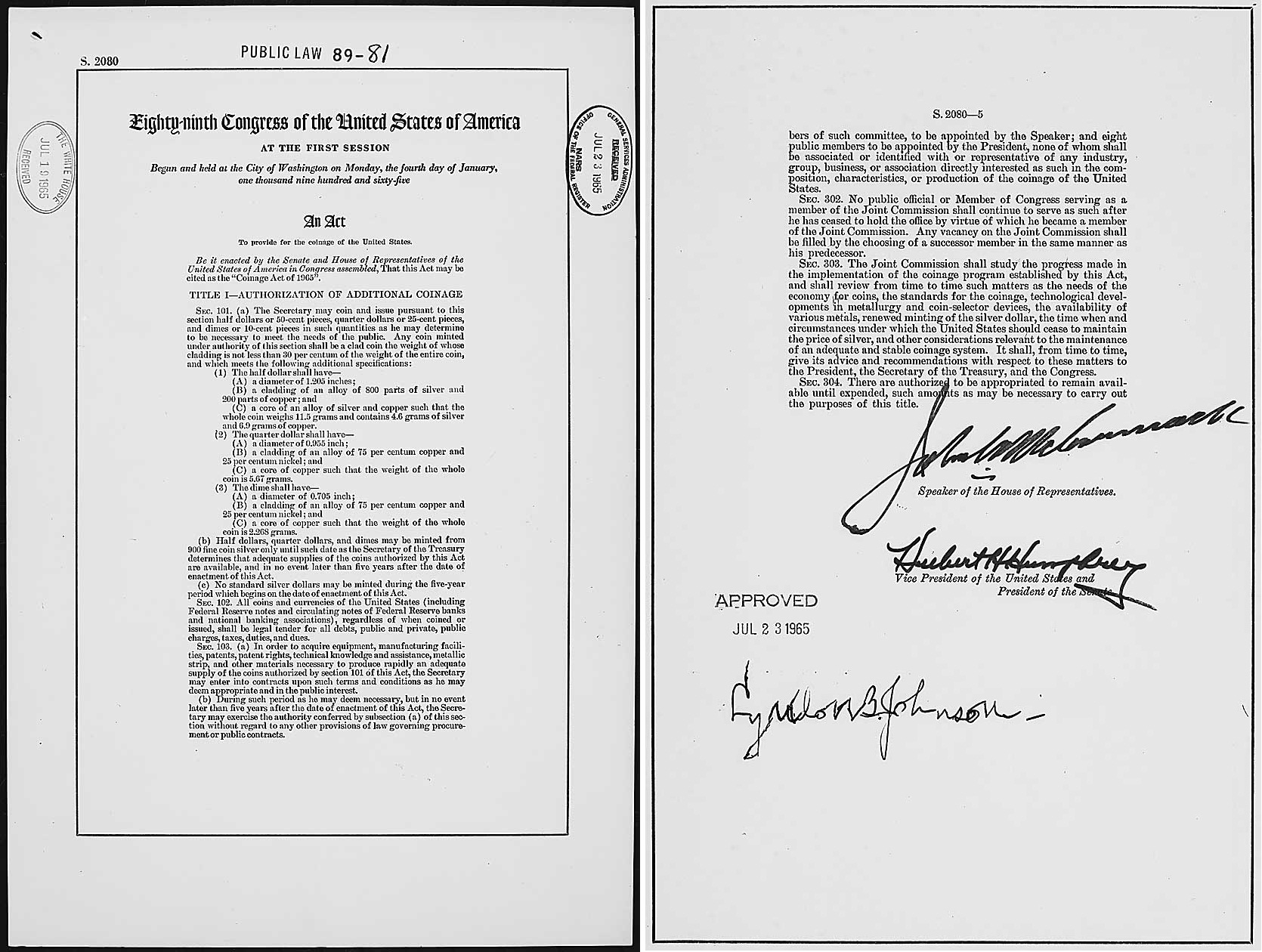
coins of similar scarcity.Īt the centre of the obverse, a six-pointed star within which the Union Shield of the United States, with seven horizontal stripes above and six vertical stripes below, representing the 13 original states forming the United States.Īround, within a plain rim, the legend UNITED STATES OF AMERICA below, the date of issue: 1864.
#1864 COINAGE ACT SERIES#
The series is not widely collected, and the pieces remain inexpensive relative to other U.S. The denomination was only struck by the Philadelphia Mint, with no mint mark, with the exception of the first year of issue (1851) when some of them were minted at the New Orleans Mint with mint mark O. It had circulated well while other silver coinage was being hoarded and melted, but once that problem was addressed, became less used and was abolished by the Coinage Act of 1873.Ī bronze replacement was briefly considered in 1863, but the silver version was finally replaced with a copper-nickel coin first issued in 1865 (for several years, the two versions were issued in parallel). With the return of other denominations to circulation, the three-cent silver saw less use, and its place in commerce was lost with the economic chaos of the American Civil War, which led to hoarding of all gold and silver coins. Congress also lightened the three-cent silver, and increased its fineness to. The coin saw heavy use until Congress acted again in 1853, making other silver coins lighter, which kept them in circulation.

The three-cent silver was the first American coin to contain metal valued significantly less than its face value, and the first silver coin not to be legal tender for an unlimited amount. 900 (the rest of the content was copper). 750 fine silver, rather than the conventional. This, and the reduction of postage rates to three cents, prompted Congress in 1851 to authorise a coin of that denomination made of.

silver coins were exported and melted for their metal. Longacre, the silver version was produced for circulation from 1851 to 1872 and for as proof only in 1873.Īfter a massive importation of gold bullion during the California Gold Rush, silver could be traded for increasing amounts of gold, so U.S. It was a tiny silver coin at first designed by James B. The United States three-cent coin (also called a trime) was a short-lived denomination of a United States dollar.


 0 kommentar(er)
0 kommentar(er)
